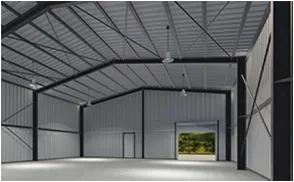- Afrikaans
- Albanian
- Amharic
- Arabic
- Armenian
- Azerbaijani
- Basque
- Belarusian
- Bengali
- Bosnian
- Bulgarian
- Catalan
- Cebuano
- Corsican
- Croatian
- Czech
- Danish
- Dutch
- English
- Esperanto
- Estonian
- Finnish
- French
- Frisian
- Galician
- Georgian
- German
- Greek
- Gujarati
- Haitian Creole
- hausa
- hawaiian
- Hebrew
- Hindi
- Miao
- Hungarian
- Icelandic
- igbo
- Indonesian
- irish
- Italian
- Japanese
- Javanese
- Kannada
- kazakh
- Khmer
- Rwandese
- Korean
- Kurdish
- Kyrgyz
- Lao
- Latin
- Latvian
- Lithuanian
- Luxembourgish
- Macedonian
- Malgashi
- Malay
- Malayalam
- Maltese
- Maori
- Marathi
- Mongolian
- Myanmar
- Nepali
- Norwegian
- Norwegian
- Occitan
- Pashto
- Persian
- Polish
- Portuguese
- Punjabi
- Romanian
- Russian
- Samoan
- Scottish Gaelic
- Serbian
- Sesotho
- Shona
- Sindhi
- Sinhala
- Slovak
- Slovenian
- Somali
- Spanish
- Sundanese
- Swahili
- Swedish
- Tagalog
- Tajik
- Tamil
- Tatar
- Telugu
- Thai
- Turkish
- Turkmen
- Ukrainian
- Urdu
- Uighur
- Uzbek
- Vietnamese
- Welsh
- Bantu
- Yiddish
- Yoruba
- Zulu
Dec . 17, 2024 10:58 Back to list
Insulated Steel Frame Buildings A Modern Approach to Sustainable Construction
In the quest for sustainable construction practices, insulated steel frame buildings have emerged as a viable and efficient solution. These structures combine the strength and durability of steel frames with advanced insulation techniques to create energy-efficient buildings that cater to a variety of needs, from commercial to residential applications. This article explores the benefits, applications, and technological advancements of insulated steel frame buildings.
The Structure of Insulated Steel Frame Buildings
At the core of insulated steel frame buildings is the steel frame itself, which provides structural integrity and allows for expansive design possibilities. Steel frames can support large spans and offer flexibility in layout, accommodating various architectural styles. The incorporation of insulation in these buildings serves a dual purpose it enhances thermal performance and contributes to the overall energy efficiency of the structure.
Insulation materials used in these buildings vary widely, including rigid foam boards, spray foam, and even advanced materials like aerogel. These insulation options help to minimize heat loss in winter and reduce heat gain in summer, making the buildings comfortable year-round. Furthermore, the combination of insulation with steel frames ensures durability, as steel is resistant to common issues such as rot, pests, and decay.
Environmental Benefits
One of the most significant advantages of insulated steel frame buildings is their contribution to sustainability. The environmental impact of constructing and maintaining buildings is substantial, and insulated steel frames are designed to minimize this footprint. For starters, steel is 100% recyclable, which means that new steel can be produced from recycled materials, reducing resource consumption.
Additionally, the high insulation levels significantly reduce the energy required for heating and cooling. According to the U.S. Department of Energy, insulated buildings can result in energy savings of up to 30% compared to traditional construction. This not only lowers utility bills for occupants but also reduces greenhouse gas emissions associated with energy production. Moreover, many insulated steel frame buildings are designed to meet or exceed the standards of green building certifications such as LEED (Leadership in Energy and Environmental Design), further highlighting their environmental credentials.
insulated steel frame buildings

Applications Across Industries
Insulated steel frame buildings are highly versatile and can be employed across various sectors. In the commercial space, they are frequently used for warehouses, retail locations, and office buildings due to their strength, durability, and low maintenance requirements. The open floor plans that steel frames facilitate allow businesses to configure their spaces in ways that best suit their operational needs.
In residential construction, insulated steel frame buildings are gaining popularity as modern, eco-friendly homes. They can be designed to blend seamlessly into various environments, from urban settings to rural locations. Homeowners are increasingly seeking out sustainable living options, and insulated steel frame homes provide an attractive solution that meets their ecological concerns while maintaining aesthetic appeal.
Technological Advancements
The future of insulated steel frame buildings is bright, thanks to rapid technological advancements. Innovations in insulation materials and construction techniques are continually being developed. For instance, the rise of prefabricated construction allows steel frame components to be manufactured in controlled environments and then assembled on-site, significantly reducing construction time and minimizing waste.
Furthermore, smart building technologies, such as energy management systems and smart thermostats, are increasingly integrated into insulated steel frame buildings. These systems monitor and optimize energy use, providing even greater efficiency and convenience for occupants. As construction practices evolve, the potential for combining insulated steel frames with renewable energy sources, such as solar panels and wind turbines, further enhances their sustainability profile.
Conclusion
Insulated steel frame buildings represent a forward-thinking solution in modern construction. Their combination of strength, energy efficiency, and adaptability makes them ideal for a variety of applications, from commercial to residential. With ongoing advancements in materials and technology, these buildings promise to play a significant role in the future of sustainable architecture. As society continues to prioritize eco-friendly practices, insulated steel frame buildings will undoubtedly be at the forefront of the construction landscape, contributing to a greener planet for generations to come.
-
Steel Frame Modular Construction for Housing
NewsAug.07,2025
-
Steel Construction Factory Processes
NewsAug.07,2025
-
Portal Frame Shed for Sale: Delivery Options
NewsAug.07,2025
-
Metal Workshops for Sale: Insulation Solutions
NewsAug.07,2025
-
Metal Steel Building Manufacturers: Post-Construction Services
NewsAug.07,2025
-
Metal Garage Shed Kits: Size Options
NewsAug.07,2025
Products categories
Our Latest News
We have a professional design team and an excellent production and construction team.












